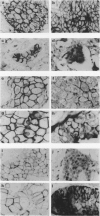Abstract
Overexpression of HER-2/neu in human breast carcinomas correlates with poor prognosis, although its strength as a prognostic indicator varies widely in different reports. Variability may be due to active signalling by HER-2/neu in a subset of the tumours in which it is overexpressed. To study this hypothesis, we have developed an activation state-specific anti-HER-2/neu monoclonal antibody. In this report, we use this antibody to analyse the signalling status of HER-2/neu in a large series of invasive breast carcinomas. Overexpression of HER-2/neu was detected in 9% of 223 cases. Of the cases demonstrating overexpression, active signalling by HER-2/neu was detected in only 35%. The clinicopathological characteristics of these cases are described. This functional assay is predicted to improve the utility of HER-2/ neu as a prognostic indicator.
Full text
PDF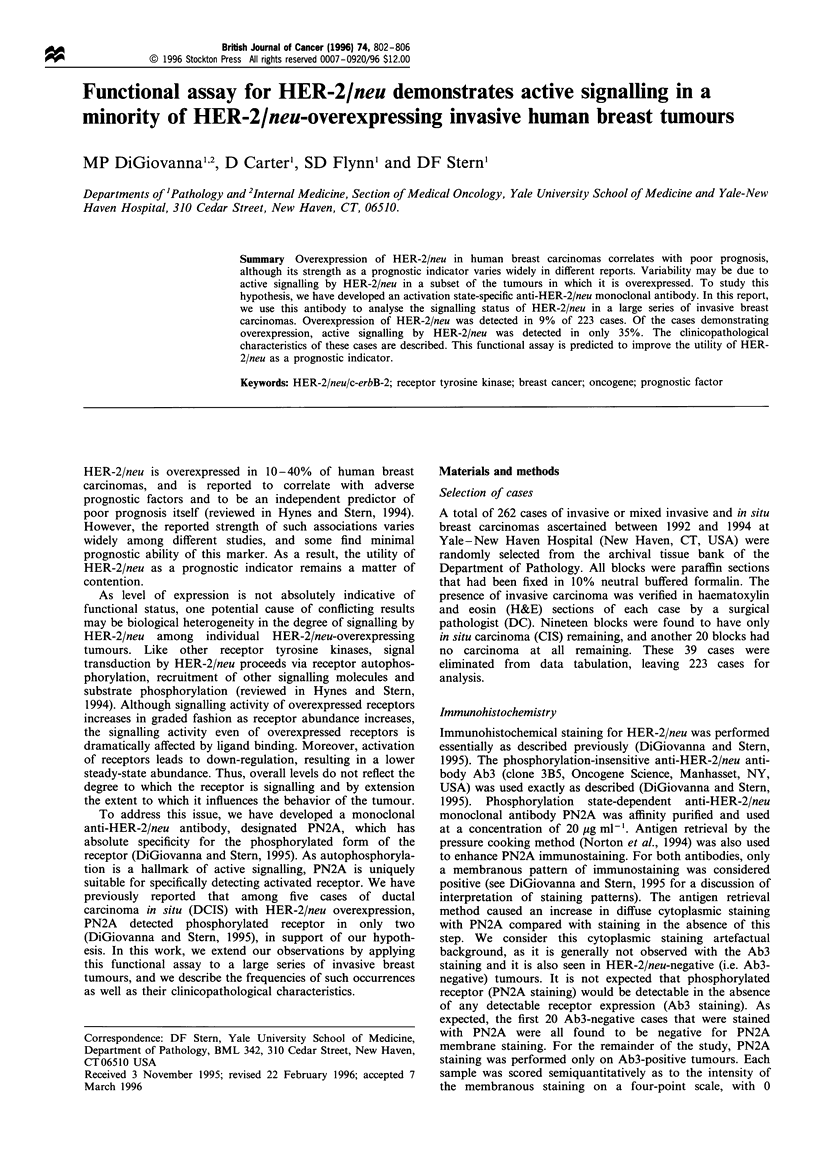
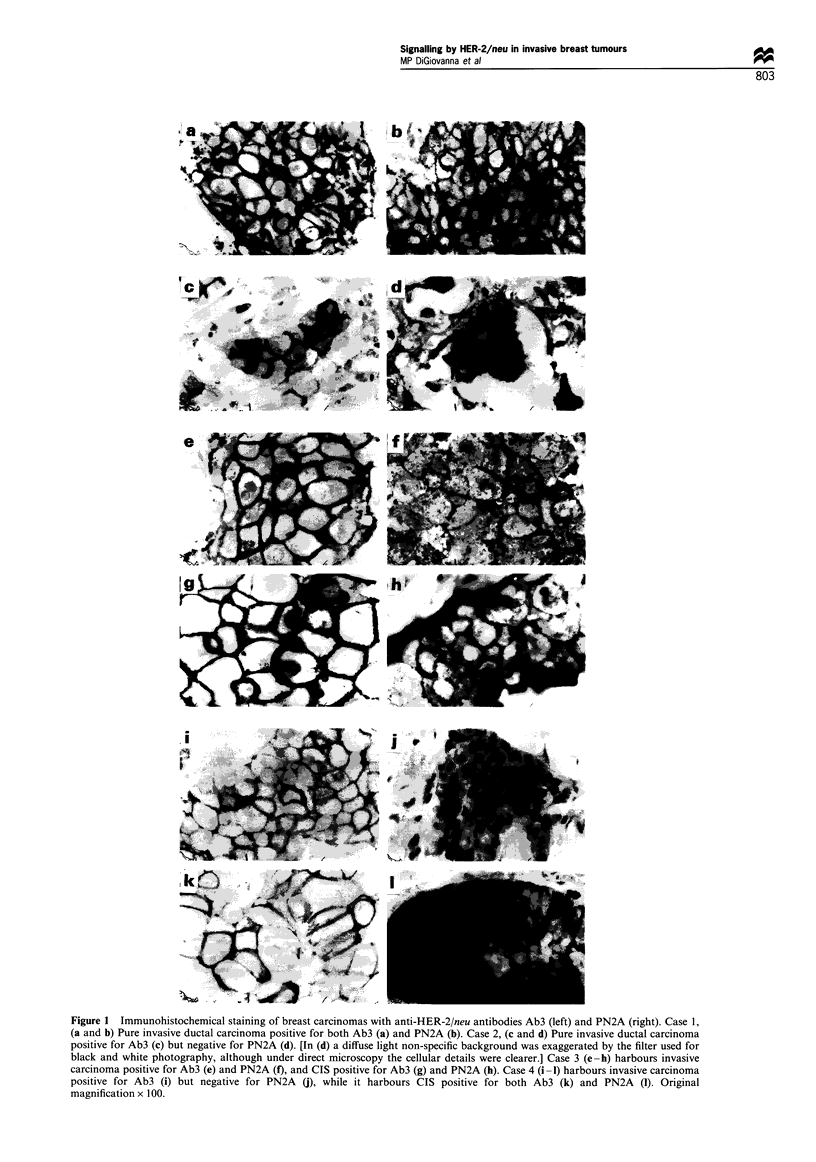

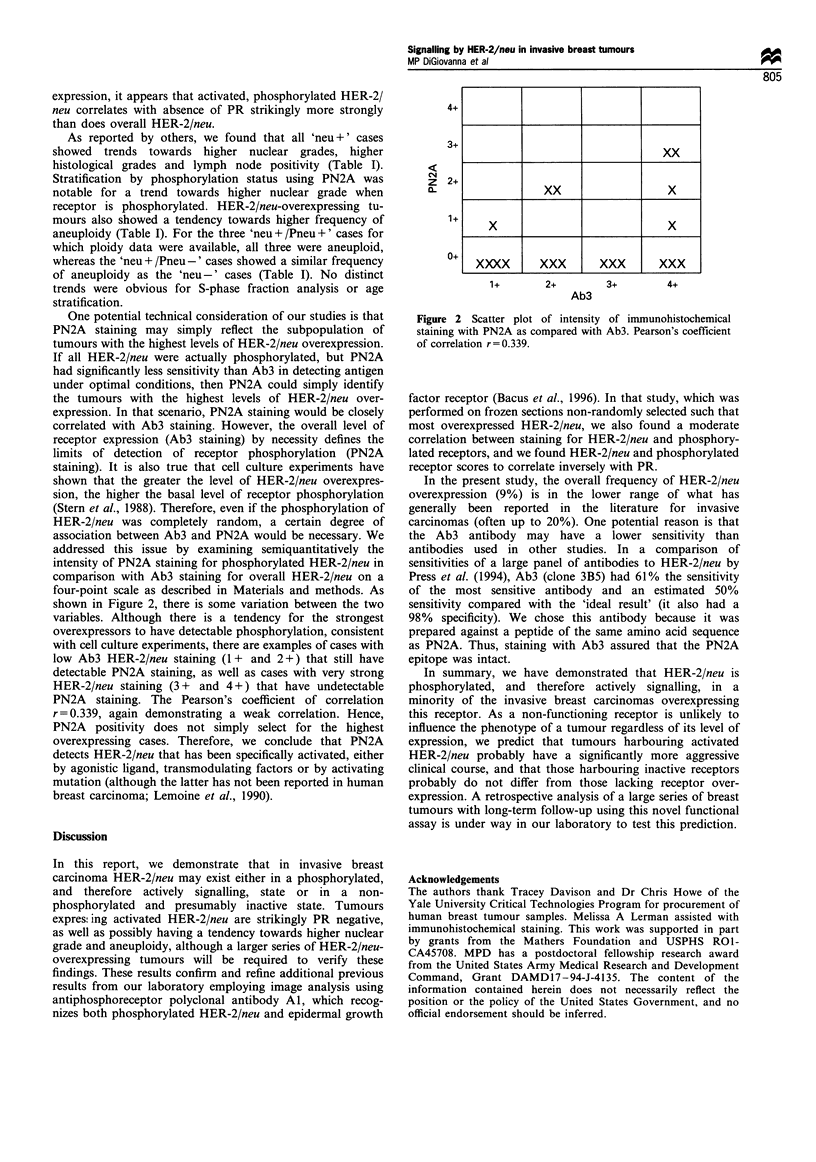
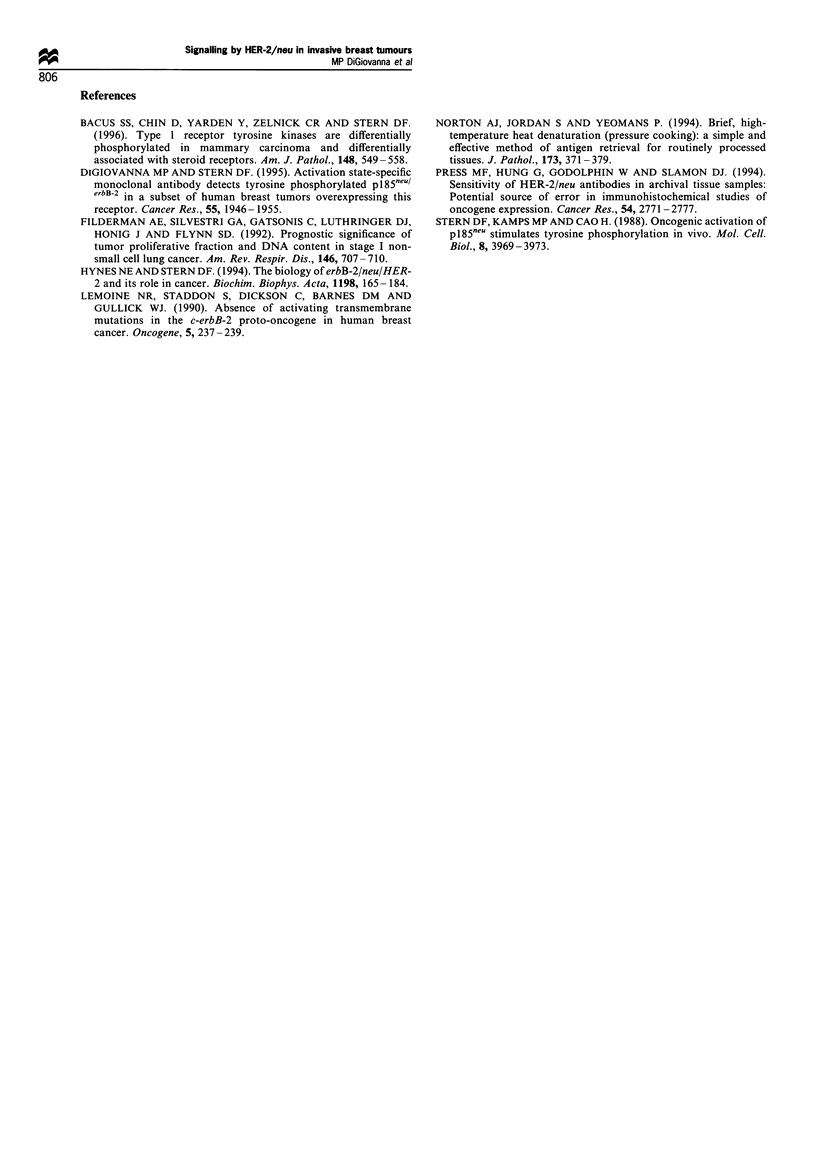
Images in this article
Selected References
These references are in PubMed. This may not be the complete list of references from this article.
- Bacus S. S., Chin D., Yarden Y., Zelnick C. R., Stern D. F. Type 1 receptor tyrosine kinases are differentially phosphorylated in mammary carcinoma and differentially associated with steroid receptors. Am J Pathol. 1996 Feb;148(2):549–558. [PMC free article] [PubMed] [Google Scholar]
- DiGiovanna M. P., Stern D. F. Activation state-specific monoclonal antibody detects tyrosine phosphorylated p185neu/erbB-2 in a subset of human breast tumors overexpressing this receptor. Cancer Res. 1995 May 1;55(9):1946–1955. [PubMed] [Google Scholar]
- Filderman A. E., Silvestri G. A., Gatsonis C., Luthringer D. J., Honig J., Flynn S. D. Prognostic significance of tumor proliferative fraction and DNA content in stage I non-small cell lung cancer. Am Rev Respir Dis. 1992 Sep;146(3):707–710. doi: 10.1164/ajrccm/146.3.707. [DOI] [PubMed] [Google Scholar]
- Hynes N. E., Stern D. F. The biology of erbB-2/neu/HER-2 and its role in cancer. Biochim Biophys Acta. 1994 Dec 30;1198(2-3):165–184. doi: 10.1016/0304-419x(94)90012-4. [DOI] [PubMed] [Google Scholar]
- Lemoine N. R., Staddon S., Dickson C., Barnes D. M., Gullick W. J. Absence of activating transmembrane mutations in the c-erbB-2 proto-oncogene in human breast cancer. Oncogene. 1990 Feb;5(2):237–239. [PubMed] [Google Scholar]
- Norton A. J., Jordan S., Yeomans P. Brief, high-temperature heat denaturation (pressure cooking): a simple and effective method of antigen retrieval for routinely processed tissues. J Pathol. 1994 Aug;173(4):371–379. doi: 10.1002/path.1711730413. [DOI] [PubMed] [Google Scholar]
- Press M. F., Hung G., Godolphin W., Slamon D. J. Sensitivity of HER-2/neu antibodies in archival tissue samples: potential source of error in immunohistochemical studies of oncogene expression. Cancer Res. 1994 May 15;54(10):2771–2777. [PubMed] [Google Scholar]
- Stern D. F., Kamps M. P., Cao H. Oncogenic activation of p185neu stimulates tyrosine phosphorylation in vivo. Mol Cell Biol. 1988 Sep;8(9):3969–3973. doi: 10.1128/mcb.8.9.3969. [DOI] [PMC free article] [PubMed] [Google Scholar]



